You may not be aware of the new edition of this book on embroidery as my website has been inactive for much of last year. The timing of this information is to help you with your Christmas shopping. It is a great gift for any stitcher. It contains basic and necessary information from a professional such as; how to thread a needle easily, start and finish threads, set up fabric with a tight tension. There are many tips and strategies to help you enjoy stitching and achieve more professional results. It is also a creative text for those who prefer to do their own thing rather than follow kits and charts.
The title is the introduction. With a total of 17 flowers to be included the first consideration was that the cover would not look like a jungle. A definite structure was necessary to keep all the plants/flowers organized.
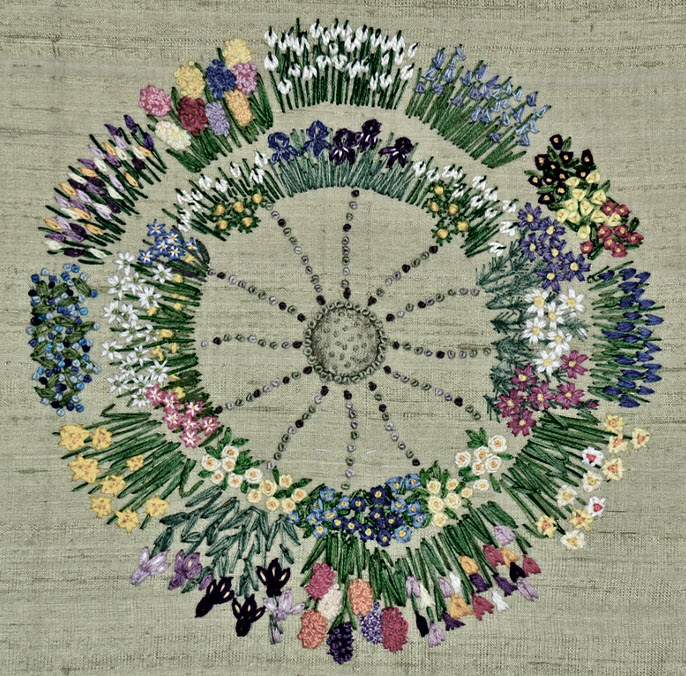
The outer circle contains the flowers featured in the first book which is no longer available. The inner circle features those that were added for the second edition and are less well known. The bushes and trees are still in the book but are not included in this cover embroidery.
Starting at the top of the outer circle, you will see white snowdrops. To the right are bluebells, primulas and grape hyacinths. Next are narcissi, tulips with hyacinths at the bottom. Following up the left side are tall iris, daffodils, and forget me nots. Lastly are crocus and more hyacinths.
The inner circle of spring flowers are less well known and are new for the 2nd edition. These photos have been enhanced so that you can see the detail of the original and the new flowers more clearly. The colour of the fabric is inaccurate.
At the top there are dark blue and mauve dwarf or rock iris. To the right are some more snowdrops with yellow aconites.
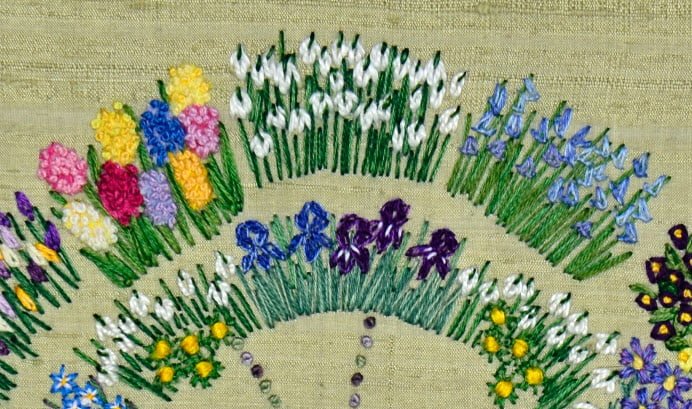
After that blue/mauve, white and pink/mauve pasque flowers or prairie crocus. Next are cream and pale yellow english primroses..
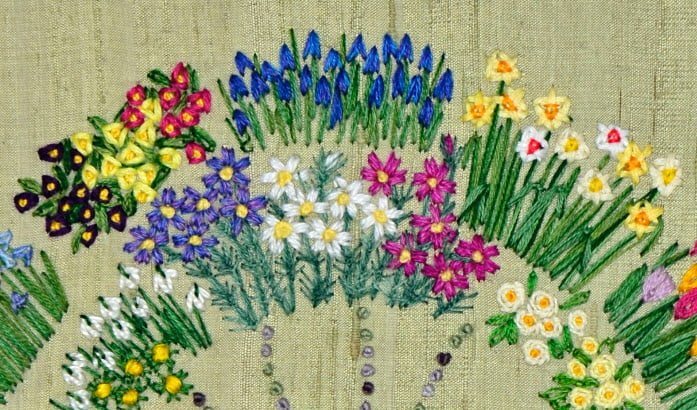
At the lower edge of the inner ring are a wilder variety of primulas in shades of blue followed but more english primroses.
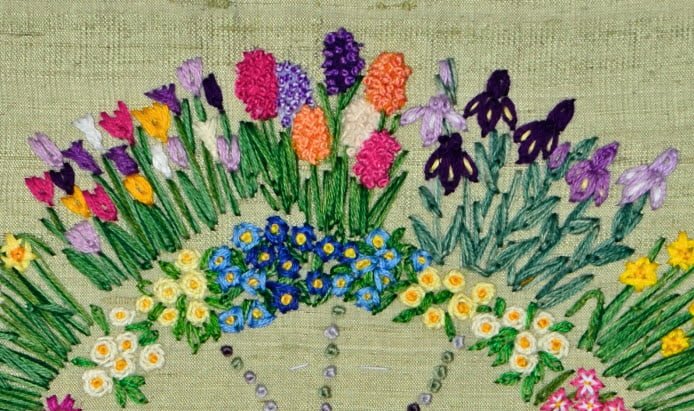
Pink, white and blue star of bethlehem include dandelions growing among them. More snowdrops and aconites complete the inner circle.
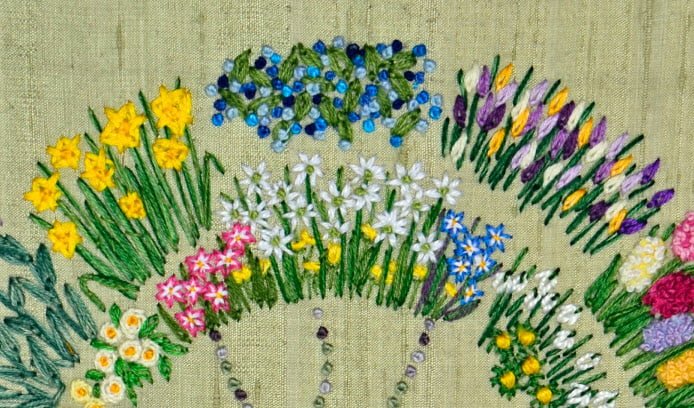
The centre contains a small circle of padded background material with small and scattered french knots. The surrounding circle is larger french knots. The radiating lines are french knots stitched in shades of mauve and green. The green thread is the same shade as the background fabric.
All the plants are stitched using only four embroidery stitches. These are straight, detached chain, buttonhole and french knots. Yes, it was a challenge to portray all these wildly different plants with such a basic and limited number of stitches. Multiple colours of DMC Floss are used. The threads are blended/mixed in the needle to obtain the correct colour for natures’ choice of each plant and flower.
Precise directions and diagrams for stitching each plant are included in the text.
None of this is difficult but it is a different way of portraying flowers. As well as creating a garden which is what most students did, these flowers are useful for small projects such as greeting cards, phone covers and glasses cases all of which you will find in the book.
Green seems to be a difficult colour to photograph accurately. This green fabric is a soft gray green and shows off all the greens used for the leaves. When stitching green thread on green fabric, one often has to change the proportions in the thread colour recipe for them to be seen clearly.
I have discovered why fashion photographs so seldom portray green except for really dark or bright greens. This is something I had never noticed before photographing the flowers for this book.
If you are interested in this book, or its companion, Hand Stitch Recognizable Summer Flowers, you can find them at eBookIt.com It is published in an ebook format to make it affordable for everyone.
Professionally colour printing a book with as many colour photos and diagrams as are included in this text is expensive. You can print it on your home colour printer.
If you would like a printed copy, please email me at ann@annbernard.com
The next entry will feature more gardens stitched by students.
Congratulations Ann on your 2nd edition book. I enjoyed seeing the clever way that the flowers from your first edition were placed.
I love the cover. I am looking forward to trying these stiches. Thank you for the inspiration.